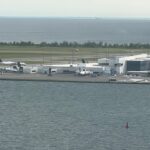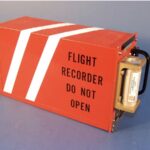Disasters can only be minimized but not eliminated. If to err is human, machines have their limitations. A minor snag can clog the machine, leading to disastrous results. And then there is nature, which, when furious, can wreak havoc. And when horrific disasters happen, they could be because of one or a combination of more than one of the above-mentioned factors.
Aviation experts have, since June 12, been putting their brains together to pinpoint the cause(s) of the AI-171 flight crash in Ahmedabad that not only took a heavy toll on human life and property but also shook the trust and faith of the general public in the safety of air travel. For days, weeks, and even months, many would not dare to opt for air travel in general and by Air India in particular. It would take a while to restore their confidence in what experts still believe is the “safest mode of conveyance.”
One factor that can work as a catalyst in restoring their confidence could be conclusive evidence of what caused the June 12 Air India disaster.
As the causes of the disaster are being investigated and information from the flight data and cockpit voice recorder is being analyzed, aviation experts continue to theorize—judging from videos of the plane’s short flight—that overloading, a potential bird hit, and the rare instance of both engines failing could have prevented the airplane from getting sufficient ‘lift’ to ascend. There may be an outside chance of a human failure in the upkeep, maintenance, or sustenance of free air operations by eliminating or minimizing accidents involving birds, animals, or even human beings that can lead to catastrophic results.
The Air India Dreamliner from Ahmedabad to London, carrying 242 passengers and crew, crashed just moments after taking off from the Ahmedabad airport. The aircraft, within minutes of its takeoff, crashed directly on the BJ Medical College UG hostel mess in Meghani Nagar.
Former Gujarat Chief Minister Vijay Rupani was among those aboard the ill-fated London-bound Air India I-171 flight. He is the second Gujarat CM to die in a plane crash.
The pilot of the aircraft gave a mayday call to the Ahmedabad air traffic controller.
According to Wonderopolis, a mayday call is basically a distress signal, and it has to be said three times in a row—Mayday! Mayday! Mayday!—so that it is not mistaken for another word or phrase that sounds similar under noisy conditions. A typical distress call will start with Mayday repeated three times, followed by all the relevant information that potential rescuers may need, including the type and identity of the aircraft involved, the nature of the emergency, the location or last known location, the current weather, the fuel remaining, what type of help is needed, and the number of people in danger.
Mayday had its origin as an international distress call in 1923. It was made official in 1948. It was the idea of Frederick Mockford, who was a senior radio officer at Croydon Airport in London. He came up with the idea for Mayday because it sounded like the French word m’aider, which means “help me.”
The Boeing 787 Dreamliner under the command of Capt. Sumit Sabharwal, with First Officer Clive Kundar, took off from the airport at 1:39 p.m. with 232 passengers, including 2 infants, and 10 crew members. Capt. Sumit Sabharwal was an LTC with 8,200 hours of experience. The copilot had 1,100 hours of flying experience.
When Captain Sabharwal made the mayday call, he also left touching messages for his daughter and his dad.
Since the long-haul flight had its origin in Ahmedabad, many aviation experts did not consider that any member of the crew could have been impacted by “fatigue” or a related issue. Of late, there have been cases where pilots were forced to fly even while they wanted to report sick or unwell. I will talk about it in the next part of Air Disasters.
After the unfortunate crash, the Director-General of Civil Aviation, an authority that regulates civil aviation in the country, came out with the following announcement: “On 12th Jun, 2025, Air India B787 Aircraft VT-ANB, while operating flight AI-171 from Ahmedabad to Gatwick, crashed immediately after take-off from Ahmedabad. There were 242 people on board the aircraft, consisting of 2 pilots and 10 cabin crew,” said a senior DGCA official. Later, one survivor was confirmed.
“As per ATC, the aircraft departed from Ahmedabad at 1339 IST (0809 UTC) from runway 23. It gave a mayday call to ATC, but thereafter, no response was given by the aircraft to the calls made by ATC. Immediately after departure from Runway 23, the aircraft fell on the ground outside the airport perimeter. Heavy black smoke was seen coming from the accident site,” the official added.
The 787 Dreamliner has a maximum takeoff weight of 227.9 tons and a fuel capacity of 126,206 liters. The twin engines are equipped, even under the worst scenario, to operate for up to 330 minutes on a single engine. “The odds of both engines failing simultaneously during takeoff are quite small, or about one in a billion,” media quoted Abhay Pashilkar, Director, CSIR-National Aerospace Laboratories (NAL), which designs civilian planes.
A plausible scenario was the plane being overloaded, he explained. This meant an incorrect estimate of the combined weight of the loaded airplane and the quantity of available fuel. This, along with the external temperature, determines the speed the plane must attain to keep rising, and a misjudgment on that can cause the plane to stall and drop.
“High temperatures on a hot day can thin out the air, meaning you get less lift from the same speed. Weight, temperature, and altitude all affect lift. Before take-off, the pilots have charts and are informed of the weights and the necessary speeds for specific altitudes,” said Pashilkar. “If the pilot didn’t hit the appropriate speeds, it would reflect in the flight recorder, and we will know.”
Media also quoted another aviation expert, Capt. Mohan Ranganathan, not ruling out the possibility of a ‘bird hit,’ or birds being sucked into both engines. He explained that the growth of grass near the runway during the monsoon season attracts a lot of insects, which in turn, attract birds.
“I suspect bird ingestion may have happened. And from the footage that we have seen, the landing gear did not retract. If that had happened, the aircraft could have climbed higher and traveled further and possibly would have crossed the residential areas,” said Capt. Ranganathan.
Dumping of garbage, especially kitchen waste, and the mushrooming of slums on the outskirts of airports like Chandigarh, Mumbai, and others have been major causes of the bird menace in the periphery of runways of both civilian and military aircraft, leading to serious accidents. Bird strike cases are a major cause of concern for aviators.
– To be concluded
Disclaimer: The opinions and views expressed in this article/column are those of the author(s) and do not necessarily reflect the views or positions of South Asian Herald.






